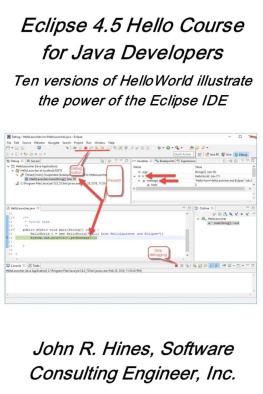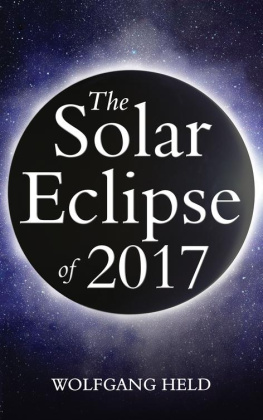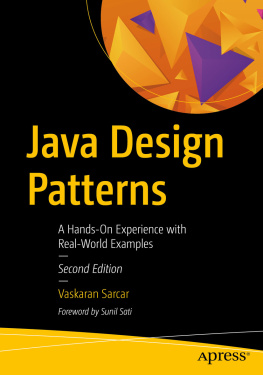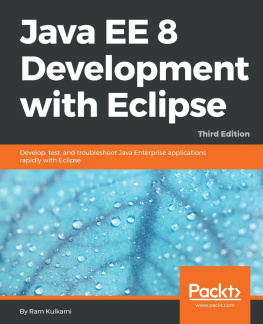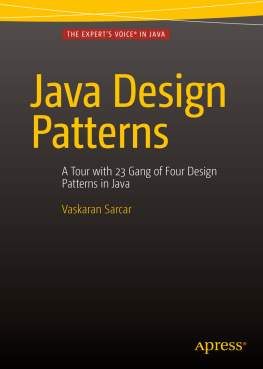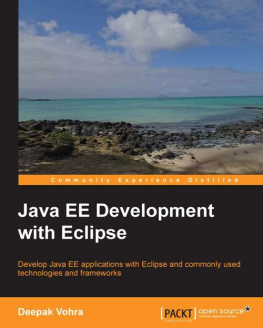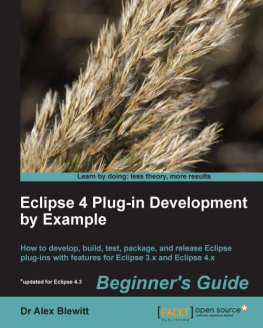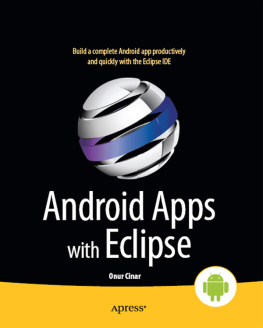Eclipse 4.5 Hello Course for Java Developers
An eight-twelve hour continuing education class
John R. Hines, Software Consulting Engineer, Inc., 1125 Country Club Rd, Lucas, TX 75002 ()
Copyright Software Consulting Engineer, Inc. All rights reserved. 2014-2016
Plagiarism is when the author steals from one source; scholarship is when the author steals from many sources. -- Anonymous
"Facts are stubborn things; and whatever may be our wishes, our inclinations, or the dictates of our passions, they cannot alter the state of facts and evidence." --John Adams
Oholiab's First Law: The Suits' need for computing power expands until all the Geeks' servers are 100% utilized running database queries and printing reports during business hours.
Corollary to Oholiab's First Law: Development can only access the servers purchased for development when nobody else wants them.
Warning: If youre not smart enough to sort the cow pies from the pearls in these notes, you do not have permission to read them!
ISBN : None
Version 1.00 201603 112300
Contents
Getting Started
Chapter 0: Getting Started
Prerequisites
Students must:
Have some experience with Java. (If you can't write the HelloWorld.java program, compile it and run it, you don't have the background to succeed in this class.)
Have a memory stick (4GB or bigger) and bring it to every class.
Terminology
Terminology | Description |
Click | Left click on a screen object. Unless right is in front of the word click, always a left click. |
Highlight | Drag mouse from left to right to highlight. Sometimes, just clicking anywhere on the selection is enough to highlight it. |
Mouse over | Move the mouse on top of a tool icon and pause. A hint should pop up. |
Right click (Right-click) | Right click on a screen object. |
Typefaces
The following terminology is used when describing Java syntax.
Typefaces | Description |
Courier plain text | required |
Courier bold text | default |
Courier italics | user-defined |
a|b | a or b |
[ ] | optional choice |
{ } | required choice |
list of items |
+ | can repeat |
What Eclipse version is used in this book?
The screen shots and key clicks are from Eclipse 4.5.1 EE.
What Windows version is used in this book?
The screen shots and key clicks are from Windows 10 Pro. Windows 7 and Windows 8.1 will look (and click) slightly differently. If you're running Windows 8 (not 8.1) you may have problems (everyone else did).
Where did the exercises in these notes come from?
I first saw a collection of more and more complex Hello programs that eventually emphasized Spring Framework in a PDF attributed to Rebecca Ong. Since, I have seen similar collections of Hello programs associated with other developers. The last exercise came from Oz Brown at Collin County Community College Continuing Ed.
Most of my examples are slightly different since my goal is to teach Eclipse creation and editing, not to teach object-oriented programming. But, thanks to Rebecca and Oz.
Where did these notes come from?
These notes are the result of thirty years of programming and twenty years of web searches. Which means that some sections are not the latest and greatest. However, they describe ways of getting things done.
(What can you expect from someone who started programming in GW Basic and wrote his first book in Windows Write 1.0?)
Why isn't this eBook copy protected?
You will want to cut and paste from the book. I recommend you use Calibre to convert this book to DOCX. You can expand the images so you can see them better.
BTW: If you want an Eclipse course taught at your company, send me an email at JRHInLucas@Yahoo.com.
Chapter 1: Why Eclipse 4.5?
What books should I read?
A good short book is Lars Vogel's Eclipse IDE ( http://www.amazon.com/Eclipse-IDE-vogella-Lars-Vogel-ebook/dp/B006O1J39S/ref=sr_1_3?s=books&ie=UTF8&qid=1457579814&sr=1-3&keywords=lars+vogel ).
A good but very pricey book is Ram Kulkarni's Java EE Development with Eclipse ( http://www.amazon.com/Java-Development-Eclipse-Ram-Kulkarni-ebook/dp/B014HFNB40/ref=sr_1_13?s=books&ie=UTF8&qid=1457579962&sr=1-13&keywords=eclipse+computer ).
A useful but complex book in the almost useless dead tree format is Kate Thompson's Zero Bugs and Program Faster ( http://www.amazon.com/Zero-Bugs-Program-Faster-Thompson/dp/0996193308/ref=sr_1_38?s=books&ie=UTF8&qid=1457580123&sr=1-38&keywords=eclipse+computer ). Only recommended for experienced programmers with good eyes.
Why use the Eclipse IDE?
In 2014 (last year data was available), Eclipse (free) has 48% of the IDE market, IntelliJ (big bucks) has 33%, NetBeans (free) has 10%, and Spring (free, based on Eclipse) has 4%. Unless you want to develop both Java and Android applications using the same (well, similar) IntelliJ IDE, Eclipse is the tool of choice, especially at frugal companies. (Eclipse is free.)
Why use Eclipse 4.5?
It's the second version on Eclipse based on Java 8. It's solid and reliable.
Chapter 2: Getting Started with Eclipse
How is the Eclipse project managed?
All work at Eclipse is done in sub-projects and components organized under top-level projects. Top-level projects are managed by PMCs (project management committees).
What are the 4.x versions of Eclipse?
4.2 | Juno | First Eclipse 4 |
4.3 | Kepler | Maven integration |
4.4 | Luna | Java 8 integration |
4.5 | Mars | Support for Java lambda expressions |
4.6 | Neon | To be released in June, 2016. Prerelease versions available now. |
What is a wizard?
A fill-in-the-boxes windows that simplifies creating something. Eclipse is big on wizards.
What is Eclipse?
An open source community of software developers who are focused on building an open development platform with extensible frameworks, tools and runtimes that will build, deploy and manage software across the software lifecycle. Alternate: The Eclipse platform.
What is the Eclipse "Big Picture"?

An alternate look at the big picture is shown below:

What is Eclipsepedia?
Eclipsepedia ( http://wiki.eclipse.org/Main_Page ) is a Wiki that contains much Eclipse knowledge.
What is open source?
The term open source describes applications that make source code available for others to view and modify. Open source applications are not necessarily public domain; they are often licensed. Eclipse is distributed with the Eclipse Public License.
What is the difference between Eclipse 3 and Eclipse 4?
Eclipse 3 is Java 6 (except 3.7.1 or 3.7.2). Eclipse 4 is Java 7 (or Java 8). Also, Eclipse 4 supports "modeled UI, dependency injection and service-based programming model, CSS-based styling." Note: Eclipse 4 also has an Eclipse 3 simulation mode.
Next page
